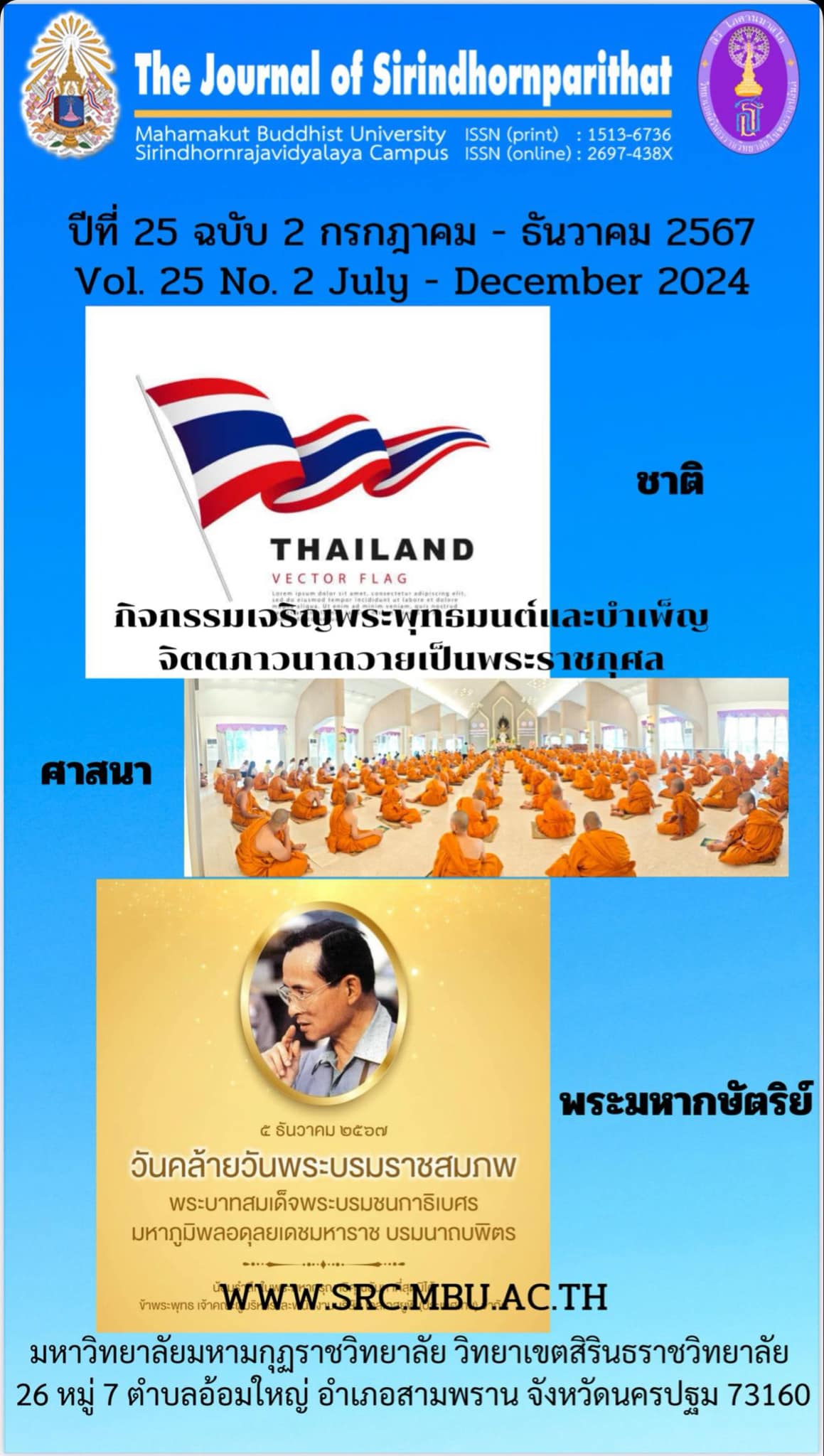Factors Affecting Consumer Adoption of Traditional Liquor Innovation in Thailand
Keywords:
local liquor, consumer adoption, lifestyleAbstract
The objectives of this study were 1) to study consumer adoption of homegrown liquor innovation in Thailand and 2) to study lifestyle factors affecting consumer adoption of homegrown liquor innovation in Thailand. Data were collected from 385 homegrown liquor consumers using the Cochran sample calculation method and selective random sampling. Statistics used in data analysis were frequency, percentage, mean and standard deviation. The hypothesis was tested by multiple regression analysis.
The results showed that
1) The respondents agreed on the consumer's adoption of homegrown liquor innovation in Thailand. at a high level
2) Hypothesis testing found that the lifestyles of consumers, namely Interests, Activities, and Opinions, influenced consumer adoption of homegrown liquor innovation in Thailand with statistically significant at the 0.05 level, which can predict the effect of 82.1 percent.
The recommendations are: 1) entrepreneurs should create awareness and publicize about the brand of local liquor in each community so that consumers can know more about local liquor, 2) should support the production of local liquor from agricultural products in the community in order to increase production processing and increase distribution and 3) If the government can promote the presentation of local liquor more widely. It will help to gain more awareness.
References
กรมประชาสัมพันธ์. (2566). กระทรวงการคลังเดินหน้าออกกฎกระทรวงการผลิตสุราฯ ปลดล็อคเพิ่มโอกาสให้ผู้ประกอบการรายเล็ก สามารถแข่งขัน ทั้งยังส่งเสริมเศรษฐกิจชุมชน พร้อมเน้นย้ำ ต้องควบคุมคุณภาพ ดูแลสังคมและสิ่งแวดล้อม.จากhttps://www.prd.go.th/th/content/category/detail/id/9 /iid/133008.
กรมสรรพสามิต. (2565). กระทรวงการคลังเดินหน้าออกกฎกระทรวงการผลิตสุราฯ ปลดล็อคเพิ่มโอกาสให้ ผู้ประกอบการรายเล็ก สามารถแข่งขัน ทั้งยังส่งเสริมเศรษฐกิจชุมชน พร้อมเน้นย้ำ ต้องควบคุมคุณภาพ ดูแลสังคมและสิ่งแวดล้อม.จาก https://www.thaigov.go.th/news/contents/details/61123.
พรรณปพร ลีวิโรจน์ ประกายทิพย์ พิชัย ภูริทัต สิงหเสม และจุฑารัตน์ รุ่งจำรัส. (2559). การพัฒนาโปรแกรมลดการดื่มเครื่องดื่มแอลกอฮอล์ ในวัยรุ่นอาชีวศึกษา.วารสารมนุษยศาสตร์ สังคมศาสตร์ ปีที่ 34 (2),273-299.
พัชยา ขันทะรักษ์ ธีระวุธธรรมกุล และนิตยา เพ็ญศิรินภา. (2563). พฤติกรรมการบริโภคสุราของประชาชนในชุมชนที่มีการผลิตสุรากลั่นชุมชน ตําบลสะเอียบ อําเภอสอง จังหวัดแพร่.
สุพัฒน์ กุมพิทักษ์ และกําพล กาหลง. (2545). อุ สาโท น้ำตาลเมา เหล้าต้ม เหล้าพื้นบ้านไทย. เกษตรกรรม ธรรมชาติฉบับที่ 8: 12-17.สถานภาพการผลิตและการตลาดสุราแช่พื้นบ้านในภาคเหนือตอนบน.
Cochran, W. G. (1953). Sampling techniques. New York: John Wiley & Sons. Inc.
Michman, R. D. (1991). Lifestyle Market Segmentation. New York: Praeger.
Plummer, J. T. (1974). The concept and application of life style segmentation. Retrieved February 10, 2023, from https://www.jstor.org/stable/1250164
Solomon, Michael R. (1996). Consumer Behavior. 3 rd ed. Englewood Cliffs, New Jersey : Prentice-Hall.
Wanna Yongpisanphob. (2562). แนวโน้มธุรกิจ/อุตสาหกรรมปี 2562-2564: อุตสาหกรรมเครื่องดื่ม. จากhttps://www.krungsri.com /th/research/industry/industry-outlook/food-beverage/beverage/ io/io-beverage-20-th.
Downloads
Published
Issue
Section
License
Copyright (c) 2024 Mahamakut Buddhist University

This work is licensed under a Creative Commons Attribution-NonCommercial-NoDerivatives 4.0 International License.
บทความที่ได้รับการตีพิมพ์เป็นลิขสิทธิ์ของ มหาวิทยาลัยมหามกุฏราชวิทยาลัย วิทยาเขตสิรินธรราชวิทยาลัย
ข้อความที่ปรากฏในบทความแต่ละเรื่องในวารสารวิชาการเล่มนี้เป็นความคิดเห็นส่วนตัวของผู้เขียนแต่ละท่านไม่เกี่ยวข้องกับหาวิทยาลัยมหามกุฏราชวิทยาลัย วิทยาเขตสิรินธรราชวิทยาลัย และคณาจารย์ท่านอื่นๆในมหาวิทยาลัยฯ แต่อย่างใด ความรับผิดชอบองค์ประกอบทั้งหมดของบทความแต่ละเรื่องเป็นของผู้เขียนแต่ละท่าน หากมีความผิดพลาดใดๆ ผู้เขียนแต่ละท่านจะรับผิดชอบบทความของตนเองแต่ผู้เดียว



